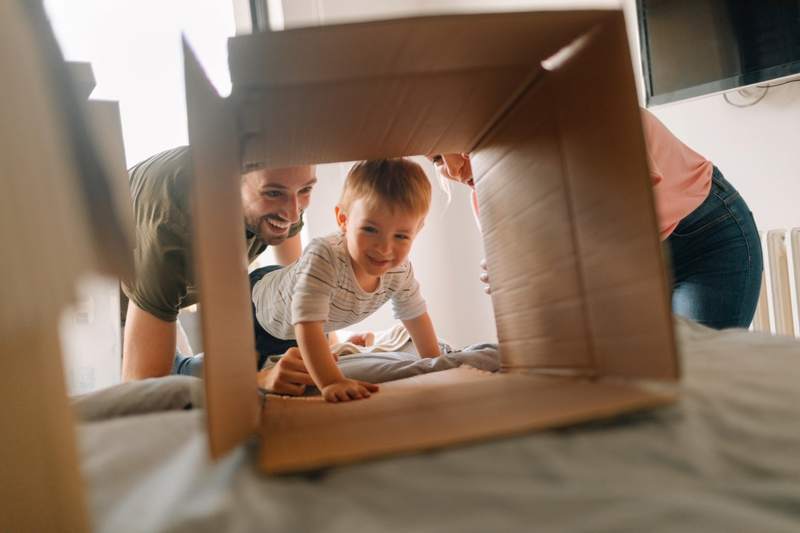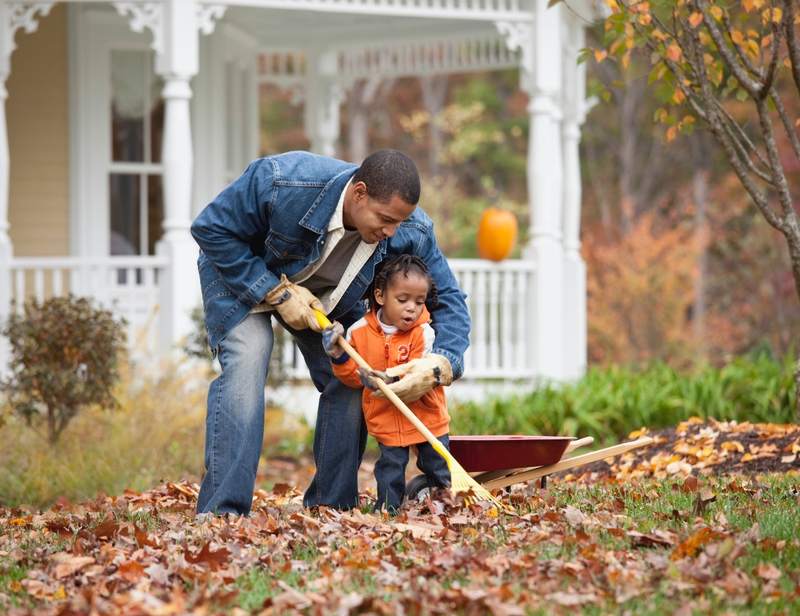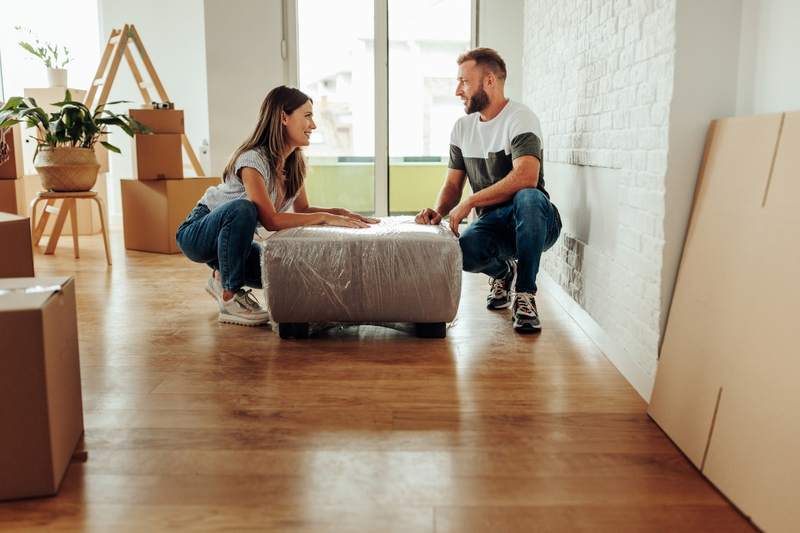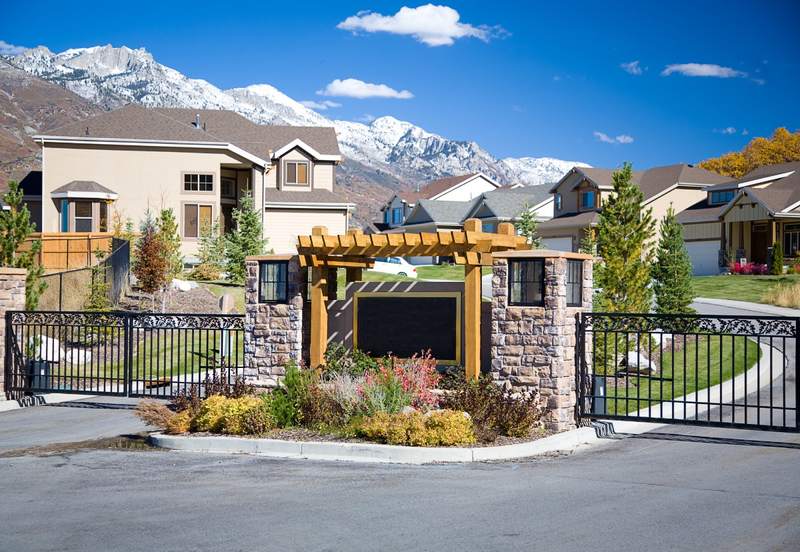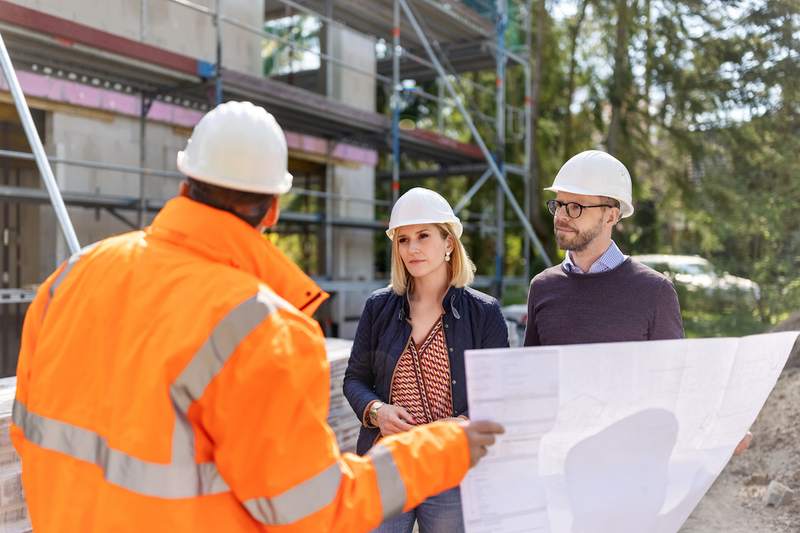
Many people dream of living in a home they designed and built from the ground up to be exactly the way they want. But building a house step by step is a lot of work — and it likely will cost more than buying an existing home. Planning for and understanding the steps to building a house will prepare you for the process.
Preconstruction
The right builder, necessary permits, and preparation of the property all depend on where you build your home, the land’s condition, and your home’s design.
1. Buy land
Before you think about building a new home, a real estate agent can help you find and make an offer on a lot of land. An agent can show you empty lots, or preexisting homes that you can tear down. If you choose the latter, dismantling the structure will take up a significant portion of your budget.
Lots in rural areas are cheaper. Single-acre remote lots can sell for as little as $1,000, though the national average for a single-family home lot is $55,000.
If you can’t afford to pay cash, you’ll need a specialized loan. Some banks offer loans you can use to buy a lot without construction plans, after which you can apply for another loan to finance construction. If you prefer to avoid two loans, many lenders offer loans you can use to both buy the land and build the home.
2. Decide on a design
Most likely, you’re going to build a single-family home. If you’re thinking about building a multifamily home, you’ll need to check local zoning laws to make sure it’s allowed.
Once you know the type of home you’re going to build, you’ll want to decide on an architectural style. The opportunity to design the look of your home may be why you’re looking into how to build your own house. Remember to consider the climate, and the style of other homes in the area, in addition to your personal preferences.
3. Find a building team
Working with a good team is important, and you’ll want to find the best one available in your area. Builders with experience will know local laws and which permits are needed, which can streamline the process.
“Seek recommendations from friends, family, or professionals in the real estate industry. Online reviews and ratings can also provide valuable insight,” says Gary Parker, a real estate agent and property investor in Salt Lake City.
Once you’ve short-listed potential building teams, schedule interviews to discuss your project with them, Parker says. “Inquire about their experience, licenses, insurance, and previous client references,” he says.
4. Get permits
New construction requires permits. On top of a residential construction permit, some of the specialized permits you may need include electrical, mechanical, and plumbing permits. You also may need a grading permit.
On average, permit fees cost between $460 and $3,000. In Austin, Texas, for example, fees for basic construction permits for a one- or two-family home that’s 1,001 to 2,000 square feet can cost as much as $1,017. Additional fees can pop up for things like zoning reviews and demolition.
Depending on the permitting process in your area, you may need to wait a week or more for approval.
5. Clear the property
If your new lot is empty, you may be able to clear it on your own, or with help from friends and family. If there are structures, debris, or large trees, you’ll need to hire a company or team to do the job.
“The average cost to clear a piece of property ranges between $1 and $3 per square foot,” says Jay Sanders, a contractor and owner of Castle Dream Basement Waterproofing, a home remodeling company in Baltimore. “Property with minimal debris and little to no trees, structures, or stumps will cost less than a property with tall trees, large structures, and heavy debris.”
Foundation
One of the most important steps in building a house is laying the foundation, which involves leveling and preparing the site, as well as installing footings and elements such as drains. You also need to waterproof the foundation, and the foundation work will need to pass an inspection.
“The time associated with building a home’s foundation from leveling the site to waterproofing can range from a few weeks to several months, depending on the size and complexity of the project,” says Pavel Khaykin, a professional homebuyer in Boston.
6. Level the site
A flat surface is necessary to build a home, so you’ll need to level the land. Also called grading or re-sloping, properly leveling the site prevents drainage problems and soil erosion.
Depending on the size of the lot and its location, this step could cost anywhere from 8 cents to $2 per square foot.
7. Foundation preparation
A final site clearing may be enough to prepare your lot for the foundation, though it’s not uncommon for problems to arise at this step. It involves setting up a wooden template for the foundation, and digging trenches around the property for footings and plumbing.
8. Install footings
Footings are a major part of your home’s support structure. Whether they are made of metal or wood, footings are a load-bearing feature that keeps the structure standing.
9. Pour the foundation
Pouring the concrete for the foundation is a real milestone — and a major expense. The national average cost for this is $43,086. That’s 11% of the average overall construction budget.
“Your home’s foundation and framing will often be some of the most expensive elements of a new home build,” says Andre Kazimierski, CEO of Improovy Painters, a contractor sourcing company in St. Louis.
10. Install drains, sewers, and water lines
Plumbing brings water in and out of your home. A water main connecting your home to the local water supply costs between $1,500 and $2,000. A sewer line that takes water waste out of your home is installed in the trenches built during the foundation preparation phase, and costs on average between $1,338 and $5,385.
11. Waterproof the foundation
Some level of waterproofing will be needed depending on the climate. Your build team will do this as it finalizes work on the foundation. Homes with basements require more waterproofing, and can cost between $3.50 and $8 per square foot.
12. Foundation inspection
Your local government wants to make sure the foundation is safe to build on, so it will require an inspector’s approval before work can continue. A foundation inspection can cost between $300 and $800, and should take only two or three hours.
Framing
One of the most expensive steps in home construction is framing. Building a new house requires a frame with sheathing, and — eventually — windows and doors.
13. Complete rough framing
The frame of your home could account for up to 20% of build costs, with a national average of $80,280. This step takes about a month, depending on the weather.
14. Apply sheathing and wrap to exterior walls
Typically included in the framing step is adding sheathing and applying your home’s exterior walls. This usually means adding plywood sheets to stabilize the frame.
15. Install windows and exterior doors
The average national cost for installing windows and exterior doors when building a single-family home is $13,158, but the price will vary depending on the number and types of windows and doors you need.
Plumbing, Electrical, and HVAC
The cost of adding an electrical system and heating, ventilating, and air conditioning systems — known commonly as HVAC — varies depending on the size of the house, the complexity of the systems, and local labor and material costs.
“It is advisable to consult with electrical and HVAC professionals to obtain accurate estimates for these specific components,” Parker says.
16. Install HVAC system
Installing an HVAC system is a big step in building a house. The type you need and the cost of an HVAC system depends in part on the climate where you’re building your home. In most cases, homes require a full conditioning system that cools or warms the home and contributes to ventilation.
HVAC systems come in several different types, from window units that cost as little as $70 all the way up to geothermal heat pumps that cost $31,000. A central air-conditioning system — the largest cooling system type — usually costs from $3,800 to $7,700.
17. Complete rough plumbing
Your build team will install the plumbing you need to get your kitchen, bathrooms, and other water systems going. This costs $22,706 on average, or 5.8% of the average total construction budget.
18. Install electrical wires and panels
Your build team will wire your home for electric power. Electrical wiring usually is installed around ducts and pipes while the HVAC systems and plumbing are still exposed. The national average is $23,892, or about 6% of the average construction budget. This step takes one to three weeks to complete.
19. Inspections
The plumbing, electrical, and HVAC systems likely need to be inspected once they’re in place. Check your local codes and talk with your build team to make sure you complete all required inspections.
Insulation and Drywall
The national average cost of insulation is $6,530, and drywall is $13,184. The two together typically take up 5% of the average construction budget. Adding texture and detailing will increase the cost by a bit.
20. Install insulation
Homes in cold climates benefit the most from insulation, though all home structures require some insulation. When installed correctly, insulation reduces heating and cooling costs. The full insulation of one room, like a basement or garage for example, costs between $2,400 and $8,600.
21. Hang drywall
The walls that form the rooms where you live day to day typically will be lined with drywall that covers the insulation, wiring, and plumbing. It’s more expensive to install drywall in larger homes. The normal range for the cost of drywall is $987 to $3,107. It could take from one to three weeks to finish installing drywall in a typical home.
22. Texture walls and ceilings
Drywall has a plain finish that many homeowners cover with texture. This process is inexpensive, and it can be done quickly. There are do-it-yourself options, or you can consult with your painters or home builders about adding texture.
Interior Finishes
Interior finishes tend to account for the largest share of your construction budget, eating up 24% of the average construction budget.
23. Paint and finish the walls
Your home interior can be customized to your liking, but the cost can go up depending on the labor you pay for, the quality of paint you select, and whether you’re considering special treatments. In a brand-new home, the cost of painting the walls averages $8,793.
24. Install flooring and countertops
Your kitchen and bathrooms require cabinets with countertops. You also will want to install flooring or carpet throughout your home. Nationally, the average cost of cabinets and countertops is $17,775, while flooring costs an average of $13,019.
25. Install bathroom fixtures
Bathrooms need sinks, showers, bathtubs, and toilets. They’ll need to be connected to the water and sewer lines that already have been installed.
Prices vary by brand and model, but here’s what you can expect to pay for common bathroom fixtures:
- Toilets: $200 to $500.
- Sinks: $400 to $1,000.
- Showers: $1,500 to $6,800.
- Bathtubs: $3,000 to $7,000.
Installation should take a few days.
26. Install bathroom mirrors and shower doors
Installing a mirror costs $140 to $430 on average, and can be done in one or two hours. The average cost for installing a shower door ranges between $475 and $1,359. Expect a quick turnaround — these installations take just a day or so.
27. Complete interior trim
Since it’s mainly for aesthetics, interior trim — baseboard, molding, etc. — can be as fancy or as plain as you’d like it to be. The work of installing it is detail oriented, and can take some time.
If you want to buy trim, it can range from 50 cents to $25 per linear foot. The average cost of trim for a new home is between $635 and $2,223.
It takes about one hour to install 20 feet of trim. A 250-foot project will take about 12 hours. Rooms with an unusual shape will take longer.
28. Complete mechanical trims
Electrical and plumbing fixtures require groundwork, as do many home appliances. The framework for those placements is called mechanical trim, and you’ll need to install these pieces during the finalization of interior finishes.
The typical cost to install a light fixture is $150 to $225. The total will depend on the number and types of fixtures you need. This step could take over a week.
Plumbing fixture costs also depend on the number and types of installations you need. A sink and faucet can cost $400 to $600 to install.
29. Install cabinets and vanities
The cost of fitting an entire home for cabinets and vanities varies a lot. The cheapest options are as low as $60 per square foot of cabinets, while a custom job can cost $1,200 per square foot. Expect the installation process to take a few days to a couple of weeks.
30. Install light fixtures, outlets, and switches
Light fixtures can be cheap. It can cost anywhere from $70 to $300 per fixture for most installations. On the high end, a chandelier can cost thousands of dollars. The cost of installing an electrical outlet ranges from $133 to $296 on average, and it should take a couple of hours per outlet to complete.
Putting in lights and outlets could take a few days or a couple of weeks, depending on the number and the complexity of fixtures that you want to install.
Exterior Finishes
One of the final steps to build a house is the exterior finish, which puts the final touches on your home’s appearance.
31. Install exterior walkways and driveway
For home access, your build team will add walkways and a driveway. Installing a driveway can cost $600 to $23,000, with the average cost being $7,000. Like your foundation, concrete sets within a day or two, and takes about 28 days to fully cure.
Walkways cost between $6 and $12 per square foot for concrete, which can take weeks to fully cure, and between $9 and $20 for pavers, which can be installed in a day or two.
32. Install exterior finishes
Your home probably requires some level of siding, as well as window shutters or other decorative details. Exterior wall finishes cost $19,746 on average. Other elements cost $1,709 on average.
33. Complete exterior grading
When it rains, water can accumulate if you don’t add a slope that prevents pooling. If your home needs grading, you’ll likely pay between 8 cents and $2 per square foot.
34. Complete exterior landscaping
The cost and timeline of this step vary depending on how much and what type of landscaping you plan to do. The national average spent on landscaping is $9,123, which comes out to 2% of the average construction budget.
Final Steps
At this point, you’re nearly finished. Your home is almost livable — but there are a few more necessary steps to take before you can move in.
35. Final home inspection
Your local government will have pricing and instructions on how to get a final home inspection. A professional inspector will check your home for structural integrity and make sure it’s safe to live in. Expect to pay between $300 and $500 for the inspection.
Depending on how busy your local inspection office is, this could take some time to schedule. The actual inspection is completed in about two hours.
36. Final walk-through
Your builders will take you through the home to give it a final look, typically three to four weeks after construction is completed. This often is called a blue-tape walk-through, or a blue-tape inspection. You’ll meet with a representative from the construction company, and they’ll make sure you’re satisfied with the work. Be sure to pay attention during the walk-through, and ask questions.
37. Closing
At closing, you’ll sign the paperwork needed to make your newly built home officially yours. Depending on how you financed the construction, you may have closing costs to pay at this time.
FAQ
Here are answers to some common questions about building a home.
